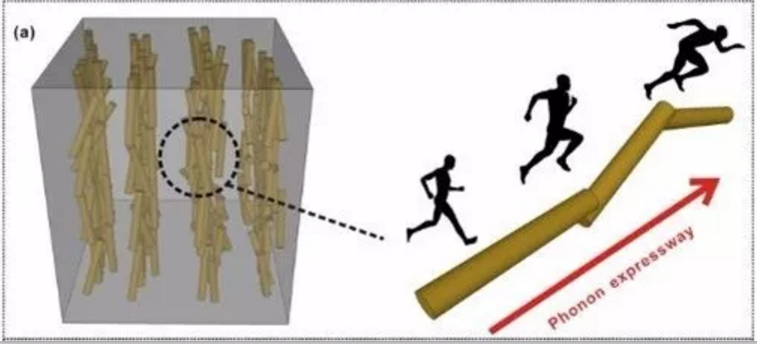1. Thermal conductive glue for power battery
The application of thermally conductive adhesive in the assembly of power batteries plays a role in improving the performance and safety of power batteries in many aspects. The purpose of use of thermal conductive glue is roughly divided into four categories: (1) fixed, (2) heat transfer, (3) flame retardant, (4) shockproof, and the specific use of thermal conductive glue is mainly: (1) gasket, ( 2) Potting, (3) Filling, etc. Boron Nitride
In thermal design, it is often necessary to consider the balance between battery charge and discharge power and heat generation and heat dissipation capabilities. The performance of the lithium battery is extremely sensitive to temperature, and obtaining an appropriate working temperature is of great significance for giving full play to the battery performance and maintaining a reasonable battery life. Reasonable choice of heat transfer medium should not only consider its heat transfer capacity, but also take into account factors such as production process, maintenance operability, and excellent cost performance. (As shown in Figure 1 power battery)

Figure 1 Power battery for electric vehicles
2. The composition and heat conduction mechanism of thermal conductive adhesive
Thermal conductive glue is mainly composed of resin matrix such as EP (epoxy resin), silicone rubber and PU (polyurethane) and thermal conductive filler. The type, amount, geometry, particle size, mixed filling and modification of thermally conductive fillers have an impact on the thermal conductivity of thermally conductive adhesives.
The principle of heat conduction of thermally conductive adhesive: the internal heat conduction carrier of the solid is mainly phonons or electrons (in the dielectric body, heat conduction is achieved through the vibration of the crystal lattice, and the energy of the lattice vibration is quantized. This kind of lattice vibration Quantum is called phonon). Inorganic non-metallic crystals conduct heat through the thermal vibration of neatly arranged crystal grains, usually described by the concept of phonons; since amorphous can be regarded as crystals with extremely fine grains, the heat conduction of amorphous can also be analyzed by the concept of phonons, but Its thermal conductivity is much lower than that of crystals; most polymers are saturated systems and have no free electrons. Therefore, adding high thermal conductivity fillers to the adhesive is the main method to improve its thermal conductivity. Thermally conductive fillers are dispersed in the resin matrix and contact each other to form a thermally conductive network, so that heat can be quickly transferred along the "thermally conductive network", so as to achieve the purpose of improving the thermal conductivity of the adhesive, as shown in Figure 2.

Figure 2 Schematic diagram of the thermal conductivity of the filler forming a network and the thermal conductive adhesive without forming a network
Third, the characteristics of hexagonal boron nitride (h-BN) materials
Boron nitride (BN) is a crystal composed of nitrogen atoms and boron atoms. The chemical composition is 43.6% boron (B) and 56.4% nitrogen (BN), with four different variants: hexagonal boron nitride (H-BN) as shown in figure 3, rhombohedral boron nitride (R-BN) , Cubic Boron Nitride (C-BN) and Wurtzite Boron Nitride (W-BN). Among them, the hexagonal boron nitride material has:
☆ Higher mechanical strength, high melting point, high thermal conductivity,
☆ Very low friction coefficient,
☆ Good insulator,
☆ Hexagonal boron nitride can withstand the high temperature of 800℃ in the air,
☆ Hexagonal boron nitride can be prepared into a two-dimensional structure similar to graphene, called "white graphene", which has excellent graphene-like properties.
Therefore, hexagonal boron nitride is an excellent thermal conductive adhesive filling material, and is currently widely used in the field of thermal conductive adhesives for power batteries.
Fourth, the application range of hexagonal boron nitride thermal conductive adhesive
Hexagonal boron nitride is used as the filler of the thermal conductive adhesive to make full use of the high thermal conductivity and high insulation properties of the hexagonal boron nitride. In order to meet various environmental requirements and have proper countermeasures for possible heat conduction problems, hexagonal boron nitride thermal conductive adhesive has many application types, and its main application areas in power battery thermal conductive adhesives are as follows:
1. Phase change thermal insulation material
Utilizing the characteristics of the substrate, the phase change occurs at the working temperature, so that the material fits the contact surface more closely, and at the same time, it also obtains ultra-low thermal resistance and smoother heat transfer. It can be used to fill the gaps between the modules and transfer them to the modules. External heat transfer.
2. Thermal conductive tape
Used in the bonding between the heating device and the radiator, it can realize the functions of heat conduction, insulation and fixation at the same time, can reduce the volume of the equipment, and is an option to reduce the cost of the equipment.
3. Thermally conductive insulating elastic rubber
Good thermal conductivity and high-level withstand voltage meet the current needs of the electronic industry for thermal conductivity materials. It is a product that replaces the dual heat dissipation system of silicone grease and mica sheet. This type of product is easy to install, is conducive to automated production and product maintenance, and is a new material with great craftsmanship and practicality.
4. Flexible thermal pad
A thicker thermally conductive gasket, specially produced for the design scheme of transferring heat through the gap, can fill the gap, complete the heat transfer between the heating part and the heat dissipation part, and also play the role of shock absorption, insulation, sealing, etc. It is very suitable for the application inside the battery module.
5. Thermally conductive filler
It can also be used as a thermal conductive adhesive, which not only has the effect of thermal conductivity, but is also a bonding and sealing potting material. By filling the contact surface or the pot-shaped body, the heat of the heating component is conducted. Cylindrical battery modules are a typical application.
6. Thermally conductive insulating potting glue
Thermally conductive and insulating potting glue is suitable for potting of electronic components that require high heat dissipation. After curing, the adhesive has good thermal conductivity, excellent insulation, excellent electrical properties, good adhesion and good surface gloss. But if the amount of glue is too large, the energy density of the battery pack will be lowered.
Five, factors affecting the performance of thermal conductive adhesive
The thermal conductivity of the filled adhesive mainly depends on the resin matrix, the thermally conductive filler and the interface formed by the two. The type, amount, particle size, geometry, mixed filling and surface modification of the thermally conductive filler will all affect the thermal conductivity of the adhesive. Performance has an impact.
1. Type and amount of thermal conductive filler
The type and amount of filler will affect the thermal conductivity of the adhesive. When the filler is small, the filler is completely wrapped by the matrix resin, and most of the filler particles are not in direct contact; at this time, the adhesive matrix becomes a heat flow barrier between the filler particles and inhibits the transmission of filler phonons, so no matter what is added No filler can significantly increase the thermal conductivity of the adhesive. As the amount of filler increases, the filler gradually forms a stable thermal conductivity network in the matrix. At this time, the thermal conductivity increases rapidly, and filling with high thermal conductivity filler is more conducive to improving the thermal conductivity of the adhesive. However, excessive thermal conductivity of the filler is not conducive to the improvement of the thermal conductivity of the system. Studies have shown that when the ratio of the thermal conductivity of the filler to the matrix resin exceeds 100, the increase in the thermal conductivity of the composite material is not significant.
2. Particle size and geometry of thermally conductive filler
When the amount of filler is the same, nanoparticles are more conducive to improving the thermal conductivity of the adhesive than microparticles. The quantum effect of nanoparticles increases the number of grain boundaries, so that the specific heat capacity increases and the covalent bonds become metal bonds. The heat conduction changes from molecular (or lattice) vibration to free electron heat transfer, so the thermal conductivity of nanoparticles is relatively higher. High; At the same time, the small particle size and large number of nanoparticles make their specific surface area large, and it is easy to form an effective heat-conducting network in the matrix, so it is beneficial to improve the thermal conductivity of the adhesive. For micron particles, when the amount of the filler is the same, the thermally conductive filler with large particle size has a smaller specific surface area and is not easy to be wrapped by the adhesive. Therefore, the probability of connection with each other is greater (it is easier to form an effective heat conduction path), which is conducive to the improvement of the thermal conductivity of the adhesive. .
When the amount of filler is the same, the probability of the thermal network formed by the same filler of different geometric shapes in the matrix is different, and the thermally conductive filler with a larger aspect ratio is easier to form a thermal network, which is more conducive to improving the thermal conductivity of the matrix.
3. Hybrid filling of thermally conductive fillers
Compared with a single particle size filler filling system, the mixed filling of different particle sizes and the same type of filler is more conducive to improving the thermal conductivity of the adhesive. The mixed filling of the same type of filler with different forms is easier to obtain an adhesive with high thermal conductivity than the filling of a single spherical filler. When different types of fillers are properly proportioned, hybrid filling is also better than single type of filler filling. This is due to the fact that the above-mentioned hybrid filling is easier to form a close-packed structure, and the particles with high aspect ratio are easy to bridge between the spherical particles during the hybrid filling, thereby reducing the contact thermal resistance and making the system relatively higher. The thermal conductivity.
4. Surface modification of thermally conductive filler
There is a difference in polarity between the inorganic particles and the resin matrix interface, resulting in poor compatibility between the two, so the filler tends to agglomerate into a group (not easy to disperse) in the resin matrix. In addition, the large surface tension of the inorganic particles makes the surface more difficult to be wetted by the resin matrix, and there are voids and defects between the phase interfaces, thereby increasing the interface thermal resistance. Therefore, modifying the surface of inorganic filler particles can improve its dispersion, reduce interface defects, enhance interface bonding strength, suppress the scattering of phonons at the interface, and increase the free path of phonon propagation, which is conducive to increasing the heat of the system. Conductivity.

Telephone: 15940764666
Landline: 0417-3902111
Website: www.yklbhg.com
Address: No. 517, Xiangyang Chemical Industry Park, Laobian District, Yingkou City, Liaoning Province
Landline: 0417-3902444
Fax: 0417-3902118
Mail box: 758007001@qq.com
Address: No. 517, Xiangyang Chemical Industry Park, Laobian District, Yingkou City, Liaoning Province
